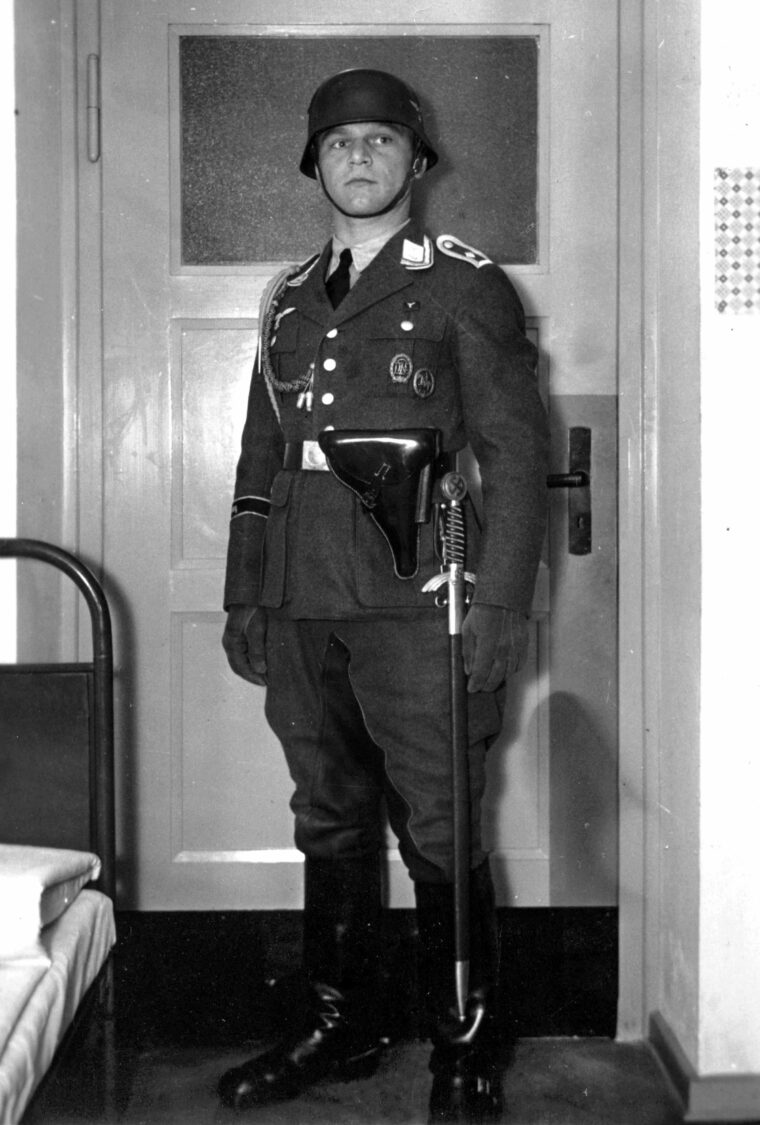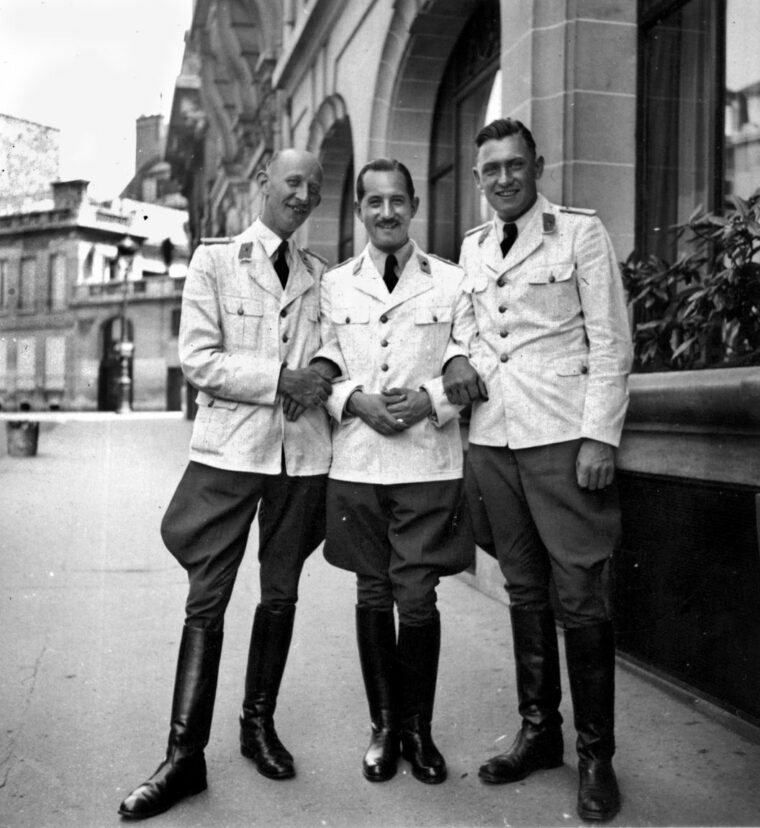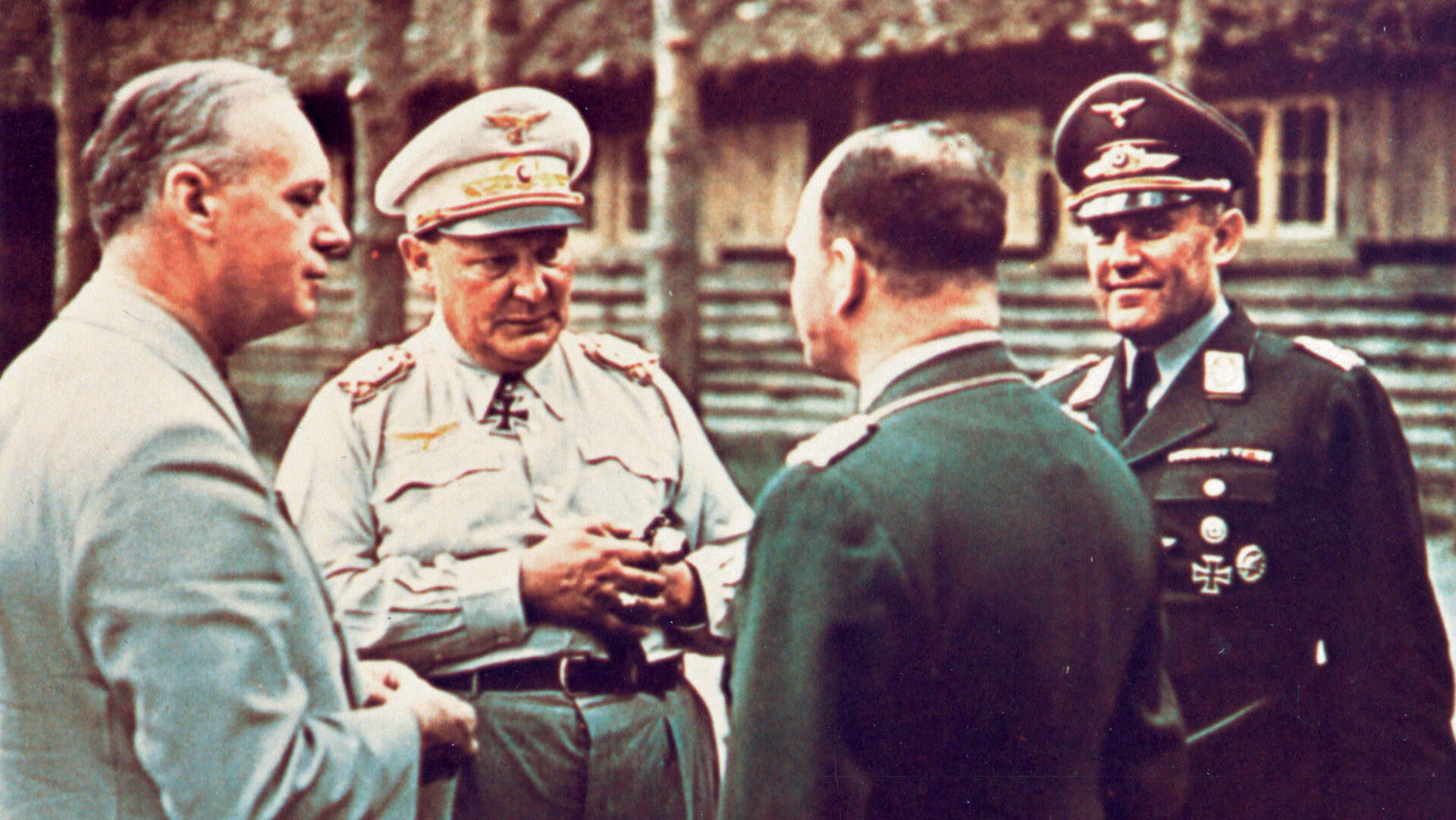By G. Paul Garson
If the phrase “the clothes make the man” is true, then it is equally true that the uniform makes the soldier. In every armed force, soldiers, sailors, airmen, and marines (and their female equivalents) are issued uniforms that give the wearer a sense of purpose, dignity, importance, authority, and even power. They also give the wearer an identification with a larger organization.
The impact of a clean, smart-looking, and well-tailored uniform should not be underestimated. Few nations in the 20th century were more aware of this than Nazi Germany. Consider the imposing, all-black tanker’s uniform, or the fear-provoking aspect of the black (and, later, gray) uniform of the SS. Even the ubiquitous and utilitarian gray-green M35 tunic worn by all Wehrmacht troops in the field looks even today as sharp as the dress uniform worn by the armies of most other nations.
In this, the second half of a two-part article, we look at 10 more examples of how the Nazi government outfitted its troops with a distinctive array of uniforms to provoke a sense of pride in the wearer and integration into a group while simultaneously proclaiming to its enemies that here was a force to be feared.
Be aware that there are literally hundreds of variations (different patterns, colored piping, collar tabs, insignia, cuff titles, shoulder boards, etc.), so this sampling should not be considered final by any means.
Early Allgemeine-SS Men
A group of young SS men, riding in a boat, display the familiar early black SS uniforms and death’s-head badges on their caps. Credit for the design of the all-black SS uniform is given to SS-Oberführer Professor Karl Diebitsch and graphic designer SS-Sturmhauptführer Walter Heck, then an SA (Sturmabteilung) company commander. While widely seen in postwar films, the black uniforms were used for ceremonial events and for the most part not seen in use after the war began. In fact, the uniforms were recycled for use by Eastern European collaborationist police forces and to other Axis allies.
Describing the black SS uniform’s impact, Reichsführer-SS Heinrich Himmler stated, “I know there are many people who fall ill when they see this black uniform; we understand that and don’t expect that we will be loved by many people.” Many of the uniforms were produced by designer Hugo Boss as well as large numbers by slave laborers in concentration camps.
The double lightning bolt symbol associated with the SS insignia had a rather prosaic derivation. Known as the SS Sig Runes, the symbol was accidentally designed in 1931 by the aforementioned Walter Heck. He happened to notice the similarity between the two sig runes and the SS (Shutzstaffel) initials. He offered the design to the SS who paid him a mere 2.5 Reichmarks; the symbol became one of the most feared and hated in European history.
A General “Flamingo”
Some 2,500 generals served in the German Army, Navy, and air force. Many generals chose to wear their brightly colored and highly identifiable uniforms and vehicle insignia. (A general officer was called a “flamingo” by the common soldier because of his double red trouser stripes and red-and-gold collar tabs.) This inclination served to increase “personal battlefield lethality” and was a significant factor in debilitating Nazi Germany’s war machine. As many as 786 German generals—including many division, corps, and army commanders—died during 1939-1945. The death of so many high-level German military leaders had a disastrous ripple effect.

Sword and Spurs
Posing in his barracks room, a Luftwaffe Obergefreiter (corporal) appears in full dress uniform including 9mm Luger holster, ceremonial sword, leather gloves, reinforced riding breeches, and shoulder lanyard, as well as his steel helmet, the Stahlhelm, an iconic image unto itself. He also wears the SA Sports Badge and the rare Horsemanship badge originally intended for the Army.

New Iron Crosses
Two Waffen-SS soldiers pose with their Iron Cross Second Class awards. Waffen-SS were the combat elements of the SS and preferred to offer a view of themselves as honorable soldiers, particularly after the war’s end when the SS was charged with committing atrocities and carrying out the “Final Solution.” These two men wear the standard issue Army field-gray uniform. The placement of the national emblem of spread-winged eagle and swastika (das Hoheitzeichen) appearing on the upper sleeve of their uniform also identifies them as Waffen-SS.

Full Colonel and Lt. Colonel—Luftwaffe
Identified by their collar tabs, the lieutenant colonel stares into the camera while the full colonel (Oberst) keeps his monocle securely in place along with his Pilot’s Badge and many awards, including the Iron Cross First and Second Class. The Iron Cross award, first introduced in 1813 by King Frederick William III of Prussia, then at war with Napoleon, would later become a prominent emblem of Nazi Germany and a highly respected commendation awarded for bravery and leadership to members of the Wehrmacht, SS, SD, Luftwaffe, and Kriegsmarine. WWII-era Iron Crosses have “1939” inscribed in the center.
The Iron Cross came in two grades: Second Class and First Class. The Iron Cross First Class could only be awarded to one who had previously received the Iron Cross Second Class, therefore it was more highly prized. The medals looked very similar and were worn on the same position on the lower left side of the uniform. When the Iron Cross First Class was awarded, the Iron Cross Second Class was signified with a small ribbon attached to the uniform tunic’s second buttonhole.
Summer Whites
A major portion of the German population wore a uniform of one kind or another, the thread of militarism woven into the very fabric of Third Reich society—including postal workers, railroad employees, and those charged with bringing aid and comfort to the injured, wounded, and sick. Here, a dapper trio of Deutsches Rotes Kreuz (German Red Cross) officers poses for the camera in their “duty” uniforms. Membership in the DRK is identified by the insignia on the lapels of their “summer white” tunics.

Police Insignia
Quickly identifiable by the distinctive “police” insignia (eagle in an oval) on his cap, a member of the German security forces poses with his watchdog. Many civilian policemen were funneled into the Wehrmacht and SS where they performed a variety of duties depending on their organization—from guarding rivers and railroads, to directing traffic, to policing their fellow soldiers, to fighting partisans, and engaging in frontline combat. Many police units were also instrumental in carrying out the “Holocaust by Bullets,” during which over 1,000,000 men, women, and children were shot to death across Europe. Most of the killers were never brought to justice.

Pin-up
An attractive young woman has donned an Army officer’s uniform, including the shoulder lanyard (aiguillette), dagger, and boots. The aiguillette, fashioned from silver cord, was purely for display and not to be confused with the similar-looking marksmanship lanyard.
As German men were sent off to war, more and more women took their places in the factories and then as auxiliary members of various branches of the military where they served in communication, logistics, and as clerical workers. As the aerial bombardment of Germany intensified, they joined flak teams and by late 1944 the Luftwaffe Flak Artillery listed 160,000 female personnel. They operated searchlights and listening devices, many standing to their posts until killed.

Erkennungsmarken: Last Bit of Kit
German “dog-tags” were a perforated oval metal plate worn around the neck. Composed of two identical sections, it could be snapped in half, the top half left with the soldier’s body, the other taken for record keeping by graves-registration units. The plate contained the individual’s unit title, roster number, and the wearer’s blood group in case a transfusion was required.












Join The Conversation
Comments
View All Comments